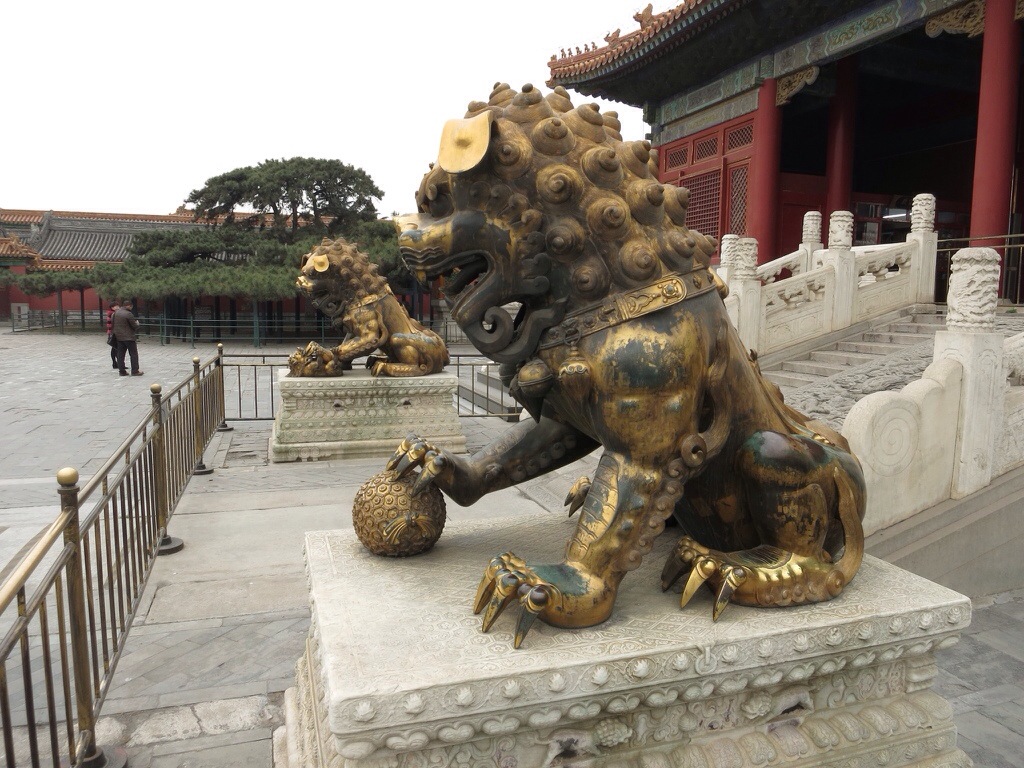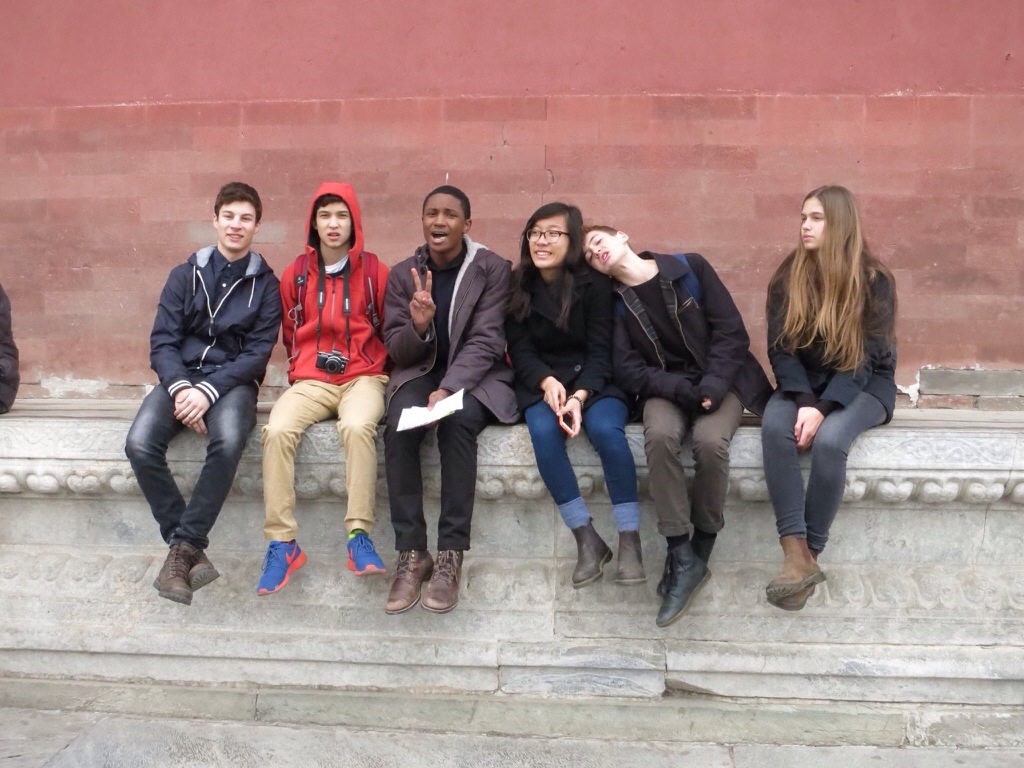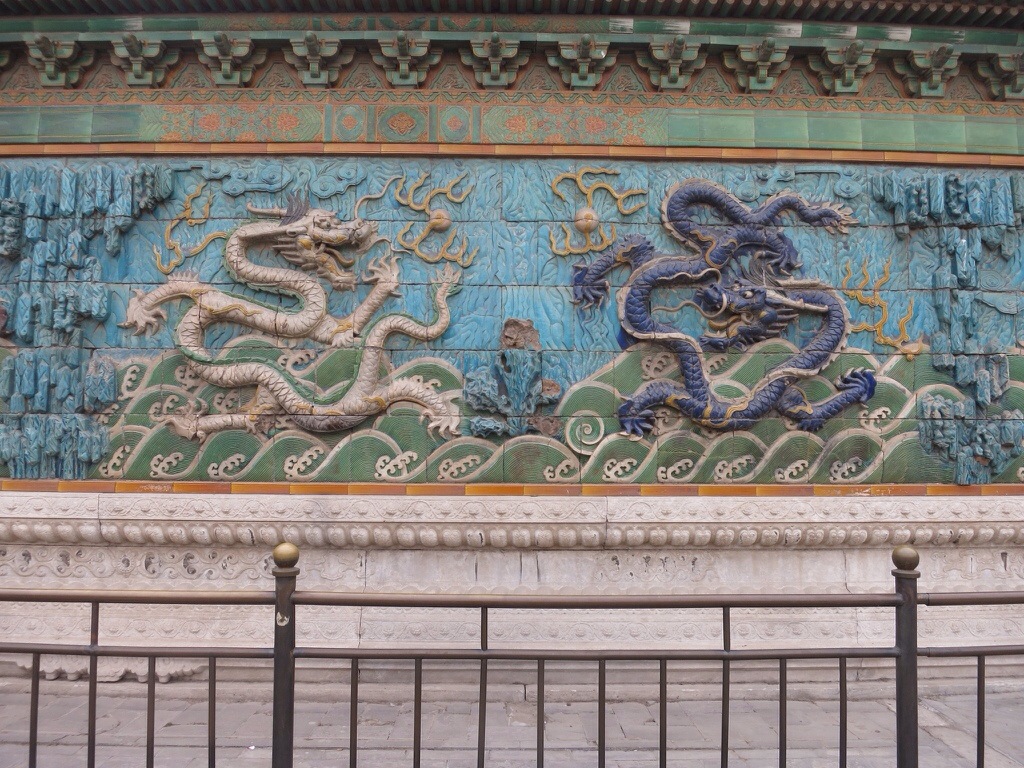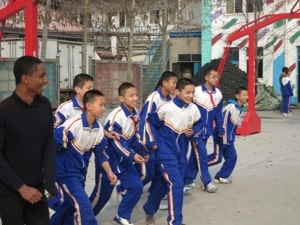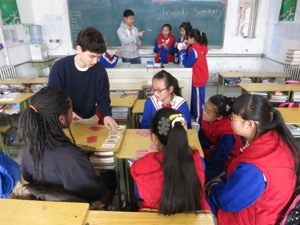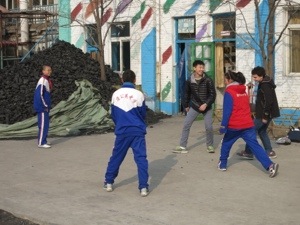Part I, Ainsley
The Dandelion School in Beijing is a middle school for children of families who moved to the city to work. The kids are in grades 7 through 9. Most of the children board at the school during the week and go home on the weekends. However, some of them live too far away to go back to their home towns so frequently. Before we got to the Dandelion School, we were told that we would have to teach a group of 13 years olds a lesson of some sort. My group planned to make collages and draw with our group. Upon our arrival, we were introduced to the 60 7th graders we would be spending time with. It was evident to Chi, Peter, Lia and I that our group of little boys probably didn’t want to doodle inside a dark classroom. Meanwhile the sun was shining outside and a large courtyard sat unoccupied in the beautiful weather. We managed to teach the boys how to play sharks and minnows in spite of the language barrier by demonstration and some practice. Once they got the hang of it, they loved it. We played six exhausting rounds full of laughter. We did the same with our next group. By our third group, we were too tired to play chase for another half hour, so instead we asked them questions about life in China in broken Chinese and preschool English. The kids showed us around their school and took us to different student clubs. Some kids were in a computer room designing video games, one group sat quietly in the library, a few were singing, and some more were doing arts and crafts. Soon enough, it was time for dinner. We all ate at desks in their classroom. The children prepared and brought us metal trays with pockets for meat, tofu and rice. When it was time to leave, the kids gathered in the courtyard to see us off. We hugged, took pictures and said our goodbyes just as the sun was going down. As we drove away, dozens of kids walked behind our bus waving and calling goodbye.
Part II, Michael
Hi! My name is Michael. Today, we visited a popular tourist site
in China. At first, we went to Tiananmen Square, which translates to
the The Gate of Heavenly Peace. Then, we learned about the gates and
history of the site as a pivotal space for protests to demonstrate the
people’s power and the government’s power. Afterwards, we entered the
Forbidden City. The Forbidden City, which was the home of Chinese emperors, lasted from the Ming Dynasty to the Qing Dynasty. It was forbidden because people were prevented from entering the emperor’s grounds.
There were many artifacts in the Forbidden City because it is also a
palace museum. Many of them are really intricate. You
can see many of the intricate drawings on it, and many of them
symbolize different meanings. For example, gold usually symbolizes
kings and is one of the major colors in the Forbidden City other than
red.
The lions here are also painted with a glorious gold. I believe that the
statues themselves consists of a mixture of bronze and copper. This lions are usually in pairs: one male and one female, guarding a building. This one
is a female because it has a child with it.
We also visited an area with the nine dragons. The nine dragons
protected the emperor and the number nine is significant because it
is a sacred number only for the emperor since it is the highest single
digit number. The number nine repeats and there are supposedly 9999 rooms in the Forbidden City and a max of 81 wives per emperor.
It is also important to note that one of the carpenters tried to cheat
the emperor with a wood tile rather than a porcelain tile and was
killed because of this.
This was definitely one of the highlights of my trip. We took
time to slowly observe and notice the detail of each building.
